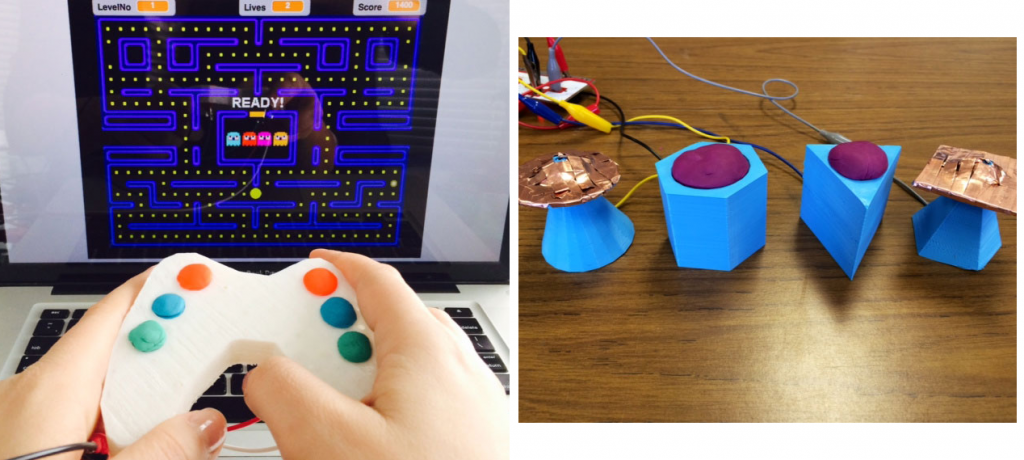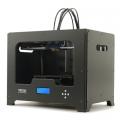Results 1 to 5 of 5
-
02-10-2015, 08:00 AM #1
3D Printed Video Game Controller Using Play-Doh for Circuits
Play-Doh, the popular modeling toy, is conductive, and the team at Inventery recently used this fact to their advantage. They brought together their 3D modeling app, Morphi, with Play-Doh, 3D printing, and the MaKey MaKey electronics kit to see what they could do. They started with a functional video game controller. After modeling the design using Morphi and 3D printing it using their Ultimaker 2 3D printer, they filled the button holes with Play-Doh -- and then used it to play PacMan! Next up was their MaKey-Morphi Band, which used 3D printed shapes to represent instruments. Again using Play-Doh to complete the circuits (and also some conductive tape), the MaKey-Morphi Band plays music. Check out how they did it, as well as videos of both projects in action, in the full article: http://3dprint.com/41045/3d-printed-controller-game/
Below is a photo of the 3D printed game controller and music pieces with their Play-Doh:

-
12-09-2015, 07:28 PM #2
play doh is conductive because it's made with flour and water. IT's the high water content that makes it conductive.
However if you leave it out of the tub the water evaporates quite quickly, the play doh shrinks by at least 50% (I use it to test moulds as it doesn't stick to pla - not actually measured shrinkage of dry doh, but it's pretty extreme) and goes hard and stops being conductive.
Not sure how that makes it a good material for circuits :-)
-
12-10-2015, 07:32 PM #3Engineer-in-Training

- Join Date
- Aug 2015
- Posts
- 256
-
12-11-2015, 05:42 AM #4
yes water does conduct, it's conductive.
due to the loose relationship of the o-h stretch bonds there are plenty weakly attached electrons in water that can carry an electrical current.
o-h stretch bonds are also why water expands when it freezes and why microwave ovens work :-)
Useful things o-h stretch bonds.
Dry salt does not conduct electricity, dry play doh does also not conduct electricity, any more than dry bread does (sort of what dry play doh becomes).
And it also shrinks A LOT !
so any tracks you lay down with wet play doh, will crack, shrink and break when it dries.
-
12-11-2015, 06:34 AM #5
So 3D printing has reached a point where we can even print human tissue. Turning the world on its head with amazing medical break throughs. On the horizon scientist are even hoping to be able print on an atomic level.
On the other hand we have a 3D printed controller for a 30 year video game...







 Reply With Quote
Reply With Quote






Extruder not feeding during print,...
04-24-2024, 01:59 AM in Tips, Tricks and Tech Help